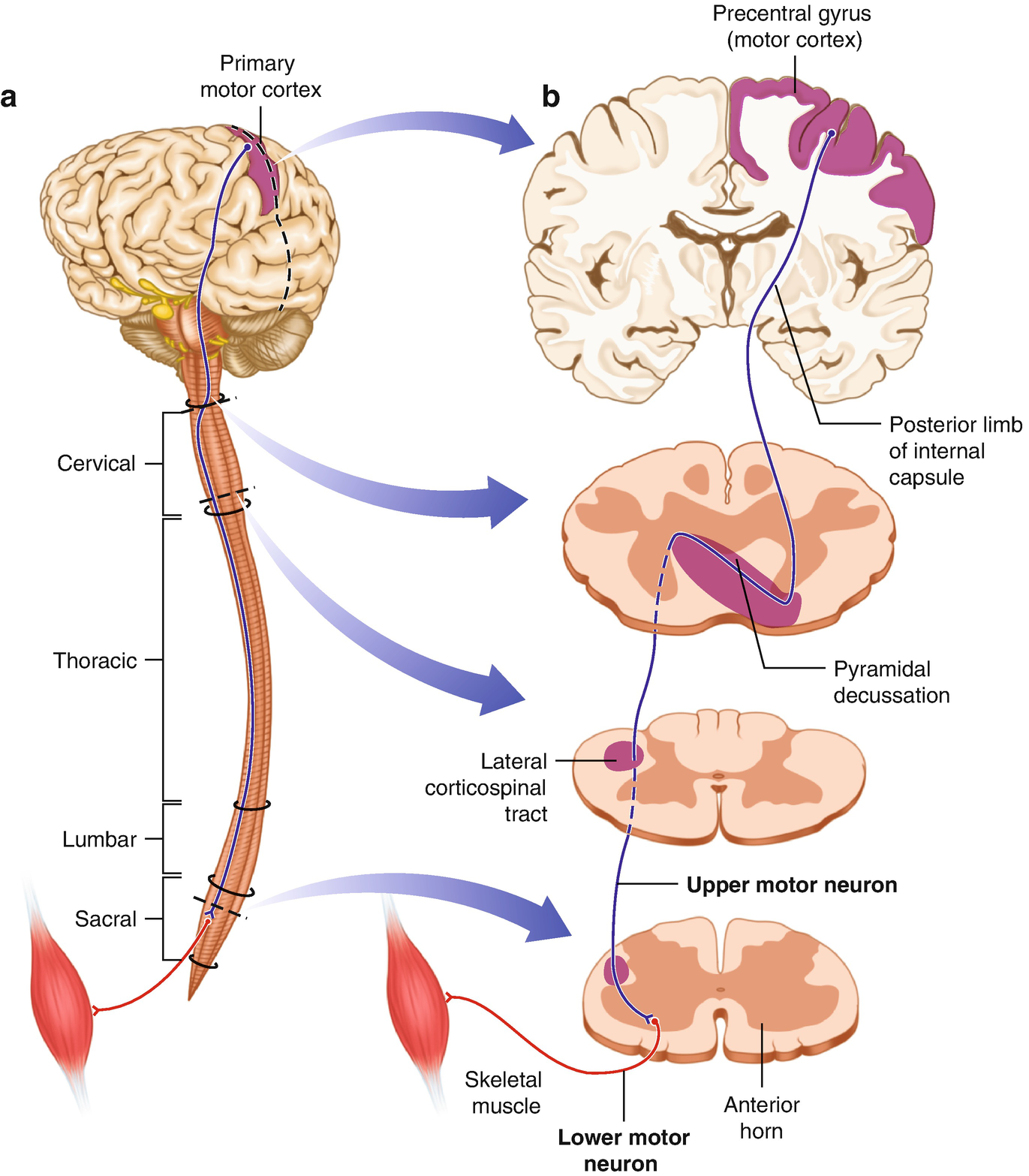

Both the fasciculi are made up predominantly of myelinated fibres.Ĥ. In contrast to the fasciculus gracilis, the fasciculus cuneatus carries numerous proprioceptivefibres (as well as those for cutaneous sensations) throughout its extent.ģ. Hence, most of the fibres passing through the fasciculus in upper cervical segments are from cutaneous receptors.Ģ. Nerve fibres carrying proprioceptive impulses through the fasciculus gracilis predominantly end inthe dorsal nuclei (in the posterior grey column of thoracic segments of the spinal cord) and, therefore, do not reach cervical levels. Some further facts of interest about the fasciculus gracilus and fasciculus cuneatus are as follows.ġ. (b) Proprioceptive impulses that convey the sense of position and of movement of different parts of the body.
#Spinothalamic tract neuroanatomy made ridiculously simple skin#
These include deep touch and pressure, the ability to localise exactly the part touched (tactile localisation), the ability to recognise as separate two points on the skin that are touched simultaneously (tactile discrimination), and the ability to recognise the shape of an object held in the hand (stereognosis). (a) Some components of the sense of touch. Third order sensory neurons located in the thalamus give off axons that pass through the internal capsule and the corona radiata to reach the somatosensory areas of the cerebral cortex. The medial lemniscus runs upwards through the medulla, pons and midbrain to end in the thalamus (ventral posterolateral nucleus). The crossing fibres of the two sides constitute the sensory decussation (or lemniscal decussation). Having crossed the middle line, the fibres turn upwards to form a prominent bundle called the medial lemniscus (Fig. Their axons run forwards and medially (as internal arcuate fibres) to cross the middle line.

The neurons of the gracile and cuneate nuclei are second order sensory neurons. Here the fibres of the gracile and cuneate fasciculi terminate by synapsing with neurons in the nucleus gracilis and nucleus cuneatus respectively. The fibres of these fasciculi extend upwards as far as the lower part of the medulla. The fasciculus gracilis, which lies medially is, therefore, composed of fibres from the coccygeal, sacral, lumbar and lower thoracic ganglia while the fasciculus cuneatus which lies laterally consists of fibres from upper thoracic and cervical ganglia. The fibres derived from the lowest ganglia are situated most medially while those from the highest ganglia are most lateral. They are unique in that they are formed predominantly by central processes of neurons located in dorsal nerve root ganglia i.e., by first order sensory neurons (Fig. These tracts occupy the posterior funiculus of the spinal cord and are, therefore, often referred to as the posterior column tracts(Fig.

PATHWAYS CONNECTING THE SPINAL CORD TO THE CEREBRAL CORTEX The Posterior Column − Medial Lemniscus Pathway Fasciculus gracilis and fasciculus cuneatus:


 0 kommentar(er)
0 kommentar(er)
